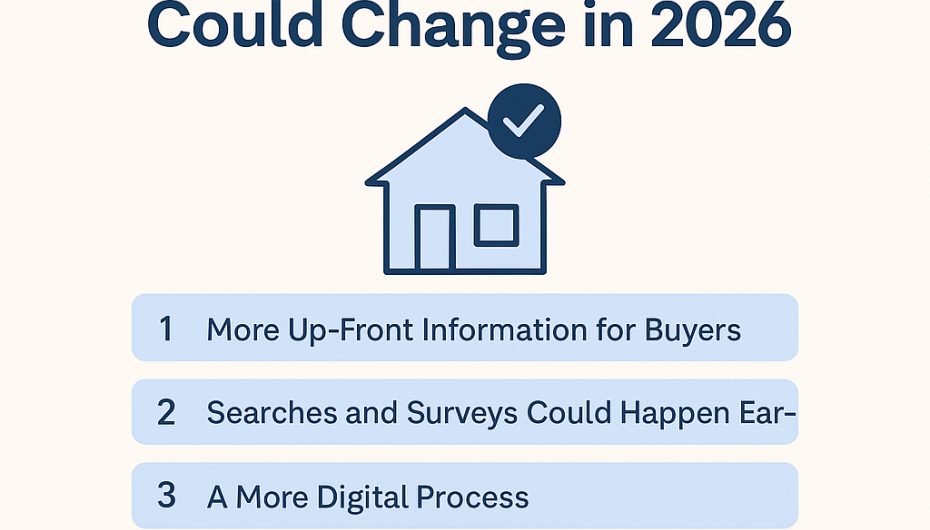 23rd October 2025
23rd October 2025
5 Ways the Home-Buying Process Could Change in 2026
For decades, the process of buying a home in England and Wales has been known for being slow, uncertain and stressful. But that could soon change. The government is currently consulting on major reforms designed to modernise how we buy and sell property, aiming to make it faster, clearer and less expensive for everyone involved.
Here are five ways the home-buying journey could look very different by 2026.
1. More Up-Front Information for Buyers
One of the biggest proposed changes is that sellers will have to provide key details before listing their property, such as leasehold terms, service charges, and whether the home is part of a chain. By giving buyers this information earlier, fewer sales should fall through later down the line. It’s a shift toward transparency, helping buyers make confident decisions right from the start.
2. Searches and Surveys Could Happen Earlier
Currently, property searches and surveys usually begin only after an offer is accepted, adding weeks or even months to the process. The government is considering allowing or even requiring these checks to be done before the home goes on the market. While this may shift some costs to sellers, it could dramatically speed up sales and prevent nasty surprises from derailing deals mid-way through.
3. A More Digital Process
If you’ve ever felt that buying a home is stuck in the paperwork dark ages, you’re not alone. That’s why the reforms include a strong focus on digital tools, from property logbooks to secure online ID checks and digital signatures. Conveyancing could become more transparent and trackable, with digital platforms allowing everyone involved to see progress in real time. The government even plans to make performance data on conveyancers and estate agents public, helping buyers choose professionals who deliver results.
4. Legally-Binding Agreements Sooner
At the moment, a sale only becomes legally binding at “exchange of contracts”, often several months after an offer is accepted. The proposed system would allow for earlier legal commitment, reducing the risk of sales collapsing at the last minute. For buyers, this could mean more certainty once an offer is accepted; for sellers, fewer wasted weeks dealing with non-serious buyers.
5. A Shorter, Smoother Timeline
Right now, the average move takes around seven months from listing to completion. These reforms aim to cut that time significantly. By combining earlier information, digital processes and greater accountability, the goal is a simpler, faster, and more reliable experience for all. If successful, it could transform one of life’s most stressful milestones into a smoother, more predictable journey.
What It Means for You
While these changes won’t happen overnight, with the government’s official roadmap expected in early 2026, they signal a new era for the UK property market. For buyers, it means a more transparent and efficient process. For sellers, it’s a reminder to prepare earlier and work with agents who embrace digital innovation and clear communication.
At Boydens, we’ll be following these developments closely and helping our clients prepare for what’s next. If you’re planning to move in 2026, our experienced team can guide you through every step, with the personal service and expertise that’s been at the heart of our family business since 1966.







